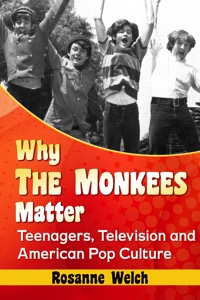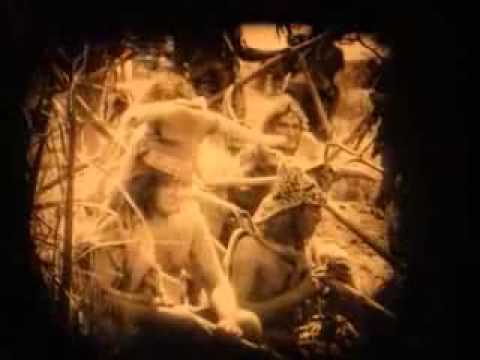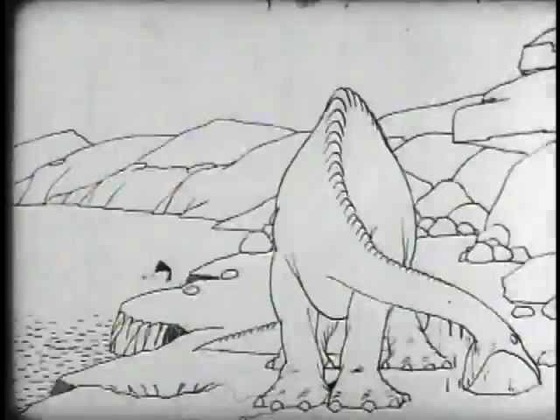Rosanne Welch talks about “Why The Monkees Matter” with Jean Hopkins Power
Watch this entire presentation (45 mins)
Jean Powergirl takes the host reigns and welcomes her guest Rosanne Welch, PhD to the show! They’ll be discussing Roseanne’s book, “Why The Monkees Matter: Teenagers, Television and American Pop Culture.”
Transcript:
Jean: So we have this gentleman here. This is the one I remember and I also noticed that I see Davy Jones’s name autographed on here. the late Davy Jones. God reset his soul. Tell us about him.
Rosanne: Davy Jones was quite talented. He came to this piece as an Englishman and he was an actor who traveled with the stage company of Oliver! He played The Artful Dodger and he did that on Broadway. It is very well known that you can see on YouTube the Ed Sullivan Show the night that that cast performed was the same night The Beatles perfomed and you can see Davy Jones singing as The Artful Dodger. So, he came and then people saw him in town in LA. he looked like the makings of a teen idol so they were grooming him. They put him on some TV shows as a guest character and then when the show was created he was the first person cast because it was a great vehicle for him. So he could sing. he did not play fully instruments. He learned to play the guitar and he plays the tambourine.
Jean:…but he was the singing guy. I remember Davy Jones a lot.
Rosanne: He sang all the ballads.
A hit television show about a fictitious rock band, The Monkees (1966-1968) earned two Emmys–Outstanding Comedy Series and Outstanding Directorial Achievement in Comedy. Capitalizing on the show’s success, the actual band formed by the actors, at their peak, sold more albums than The Beatles and The Rolling Stones combined and set the stage for other musical TV characters from The Partridge Family to Hannah Montana. In the late 1980s, the Monkees began a series of reunion tours that continued into their 50th anniversary.
This book tells the story of The Monkees and how the show changed television, introducing a new generation to the fourth-wall-breaking slapstick created by Laurel and Hardy and the Marx Brothers. Its creators contributed to the innovative film and television of 1970s with projects like Bob & Carol & Ted & Alice, The Mary Tyler Moore Show, Laugh-In and Welcome Back, Kotter. Immense profits from the show, its music and its merchandising funded the producers’ move into films such as Head, Easy Rider and Five Easy Pieces.
Rosanne Welch, PhD has written for television (Touched by an Angel, Picket Fences) and print (Three Ring Circus: How Real Couples Balance Marriage, Work and Kids and The Encyclopedia of Women in Aviation and Space). In the documentary world she has written and produced Bill Clinton and the Boys Nation Class of 1963 for ABC NEWS/Nightline and consulted on PBS’s A Prince Among Slaves, the story of a prince from West Africa who was enslaved in the 1780s, freed by order of President John Quincy Adams in the 1820s and returned to his homeland.
Podcast: Play in new window | Download
Subscribe: RSS
![18: Davy Jones and The Monkees : “Why The Monkees Matter” Interview with Jean Power [Video] (1:00)](https://rosannewelch.com/wp-content/uploads/2017/09/rmw-power-18-davy-jones.jpeg)

![Giving Voice to Silent Films and the Far From Silent Women Who Wrote Them with Dr. Rosanne Welch [Video] (17:44)](https://rosannewelch.com/wp-content/uploads/2017/09/Slide01.jpg)








![17: Even More on Micky Dolenz and The Monkees : “Why The Monkees Matter” Interview with Jean Power [Video] (0:38)](https://rosannewelch.com/wp-content/uploads/2017/09/rmw-power-17-dolenz-3.jpeg)


![16: More on Micky Dolenz and The Monkees : “Why The Monkees Matter” Interview with Jean Power [Video] (0:56)](https://rosannewelch.com/wp-content/uploads/2017/08/rmw-power-16-dolenz-2.jpeg)

![15: Micky Dolenz and The Monkees : “Why The Monkees Matter” Interview with Jean Power [Video] (1:04)](https://rosannewelch.com/wp-content/uploads/2017/08/rmw-power-15-dolenz.jpeg)

![14: More On Michael Nesmith and The Monkees : “Why The Monkees Matter” Interview with Jean Power [Video] (1:00)](https://rosannewelch.com/wp-content/uploads/2017/08/rmw-power-14-nesmith-2.jpeg)